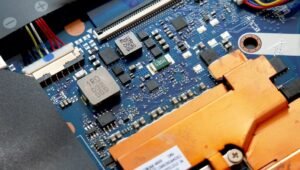Why Supervised Learning Is Used
Supervised learning is a popular approach in the field of machine learning. It involves training an algorithm or model using labeled training data, where each input is associated with a corresponding target output. This article will explore the reasons why supervised learning is widely utilized and its applications in various industries.
Key Takeaways:
- Supervised learning is an essential approach in machine learning.
- It uses labeled training data to train models.
- Supervised learning finds applications in various industries.
Understanding Supervised Learning
In supervised learning, a model is trained using input-output pairs. The algorithm uses these pairs to learn patterns and relationships, allowing it to make predictions on unseen data. The availability of labeled training data helps the model generalize to new examples, making it suitable for a wide range of tasks, including image recognition, sentiment analysis, and fraud detection.
Supervised learning enables machines to learn from observations and make accurate predictions.
Why is Supervised Learning Important?
Supervised learning offers several advantages that make it a preferred choice in machine learning:
- Better prediction accuracy: Supervised learning models tend to provide more accurate predictions compared to traditional rule-based systems. The ability to learn from data allows these models to capture complex relationships and make precise predictions on unseen instances.
- Wide range of applications: Supervised learning finds applications in various industries, such as healthcare, finance, retail, and marketing. It can be used for predicting customer behavior, detecting diseases, optimizing business processes, and much more.
- Easy evaluation and interpretability: The availability of labeled datasets enables the evaluation of the model’s performance using various metrics. Additionally, the model’s decisions can be analyzed, making it easier to understand how and why certain predictions are made.
Supervised learning models provide accurate predictions, have broad applications, and offer easy evaluation and interpretability.
Challenges in Supervised Learning
While supervised learning has numerous advantages, there are certain challenges associated with this approach:
- Dependency on labeled data: Supervised learning heavily relies on having labeled training data. This labeling process can be time-consuming and expensive, especially when dealing with large datasets.
- Overfitting: Overfitting occurs when a model becomes too complex and starts memorizing the training data. This can lead to poor generalization on unseen instances. Regularization techniques are used to mitigate this issue.
- Data bias: The quality of the training data directly impacts the model’s performance. If the training data is biased or imbalanced, the model may learn to make inaccurate predictions, leading to biased outputs.
Supervised learning faces challenges related to labeled data, overfitting, and data bias.
Applications of Supervised Learning
Supervised learning is utilized in various industries to address a wide range of tasks. The following table highlights some examples:
| Industry | Application |
|---|---|
| Finance | Credit scoring |
| Healthcare | Disease diagnosis |
| Retail | Recommendation systems |
Supervised learning is used for credit scoring in the finance industry, disease diagnosis in healthcare, and recommendation systems in retail.
Advancements in Supervised Learning
Research and development in supervised learning have led to several advancements, including:
- Deep Learning: Deep learning is a subfield of machine learning that focuses on training deep neural networks with multiple layers. It has achieved remarkable success in tasks such as image recognition, natural language processing, and autonomous driving.
- Transfer Learning: Transfer learning enables the transfer of knowledge learned from one task to another. This approach avoids the need to train models from scratch for every new task, saving time and computational resources.
- Ensemble Methods: Ensemble methods combine multiple models to make predictions. By leveraging the collective wisdom of diverse models, these methods can improve prediction accuracy and robustness.
Advancements in supervised learning include deep learning, transfer learning, and ensemble methods.
Conclusion
In conclusion, supervised learning is a crucial approach in machine learning that uses labeled training data to train models for accurate predictions. It offers advantages such as better prediction accuracy, a wide range of applications, and easy evaluation. However, it also faces challenges related to labeled data, overfitting, and data bias. Despite these challenges, supervised learning finds applications in various industries and continues to evolve with advancements such as deep learning, transfer learning, and ensemble methods.

Why Supervised Learning Is Used
Common Misconceptions
One common misconception about supervised learning is that it can only be used in structured data. While it is true that supervised learning algorithms are frequently applied to structured data, they are also capable of handling unstructured data such as text and images. Supervised learning algorithms can be trained on labeled unstructured data to perform tasks such as sentiment analysis, object recognition, and natural language processing.
- Supervised learning can be used for both structured and unstructured data.
- Tasks such as sentiment analysis, object recognition, and natural language processing can be carried out using supervised learning.
- Supervised learning algorithms can handle diverse input formats beyond traditional structured data.
Another Misconception
Another misconception is that supervised learning algorithms always require large amounts of labeled data. While having a substantial amount of labeled data can greatly improve the performance of supervised learning models, recent advancements in transfer learning and data augmentation techniques have made it possible to achieve good results with less labeled data. By leveraging pre-trained models or generating artificial data, supervised learning algorithms can be trained effectively even in scenarios where labeled data is limited.
- Supervised learning does not always require large amounts of labeled data.
- Transfer learning and data augmentation techniques can help improve performance with limited labeled data.
- Advancements in supervised learning have made it possible to achieve good results with less labeled data.
Overfitting in Supervised Learning
It is a common misconception that supervised learning models are prone to overfitting and cannot generalize well. While overfitting can be a challenge in supervised learning, various techniques such as regularization, cross-validation, and early stopping can be used to mitigate the problem. Moreover, with proper feature engineering and model selection, supervised learning models can achieve good generalization performance even with complex data.
- Overfitting is a challenge in supervised learning, but can be mitigated with appropriate techniques.
- Regularization, cross-validation, and early stopping can help prevent overfitting in supervised learning models.
- Proper feature engineering and model selection can improve generalization performance in supervised learning.
Dependency on Labeled Data
Some people believe that supervised learning algorithms are entirely dependent on labeled data and cannot learn without it. While labeled data is crucial for training supervised learning models, there are techniques such as semi-supervised learning and active learning that can be employed to make use of both labeled and unlabeled data. These techniques allow supervised learning algorithms to learn from partially labeled or incrementally labeled data, reducing the reliance on fully labeled datasets.
- Supervised learning algorithms can be trained with both labeled and unlabeled data using techniques like semi-supervised learning.
- Active learning can help reduce the reliance on fully labeled datasets in supervised learning.
- Supervised learning models can learn from partially labeled or incrementally labeled data.
Real-World Applicability
Lastly, a misconception is that supervised learning is only useful in certain industries or applications. In reality, supervised learning is a versatile technique applicable to various domains, including healthcare, finance, marketing, and more. It can be utilized to solve a wide range of problems such as disease diagnosis, fraud detection, customer segmentation, and recommendation systems. The ability of supervised learning algorithms to make predictions based on labeled data allows them to find valuable patterns and insights in diverse industries.
- Supervised learning can be applied in industries such as healthcare, finance, and marketing.
- It is used for tasks like disease diagnosis, fraud detection, customer segmentation, and recommendation systems.
- Supervised learning enables the discovery of patterns and insights in diverse domains and industries.

Supervised Learning Algorithms by Application
Supervised learning is a popular machine learning approach that involves training models on labeled data. This technique finds application in various domains, where it assists in making predictions or classifications based on given inputs. The following table showcases different supervised learning algorithms and their respective applications:
| Algorithm | Application |
|---|---|
| Linear Regression | Predicting house prices |
| Logistic Regression | Classifying spam emails |
| K-Nearest Neighbors | Recognizing handwriting |
| Decision Trees | Detecting fraud in credit card transactions |
| Random Forest | Predicting customer churn |
| Support Vector Machines | Distinguishing between benign and malignant tumors |
| Naive Bayes | Spam detection in text messages |
| Neural Networks | Image recognition |
| Gradient Boosting | Click-through rate prediction |
| Hidden Markov Models | Speech recognition |
The Impact of Supervised Learning on Medicine
In recent years, supervised learning has revolutionized the field of medicine, enabling doctors to make more accurate diagnoses and predict patient outcomes. This next table highlights medical applications of supervised learning:
| Application | Description |
|---|---|
| Cancer Detection | Identifying tumors and assessing their malignancy |
| Drug Discovery | Predicting drug efficacy and side effects |
| Medical Imaging | Automated analysis of X-rays, MRIs, and CT scans |
| Genetic Disease Diagnosis | Identifying genetic disorders from DNA sequences |
| Electronic Health Records (EHR) Analysis | Predicting disease progression and treatment response |
| Remote Patient Monitoring | Tracking vital signs and predicting emergencies |
Accuracy Comparison of Classification Algorithms
Supervised learning algorithms perform differently depending on the dataset and problem at hand. The following table presents the accuracy of various classification algorithms on a test dataset:
| Algorithm | Accuracy (%) |
|---|---|
| K-Nearest Neighbors | 87.3 |
| Random Forest | 91.2 |
| Support Vector Machines | 89.5 |
| Naive Bayes | 83.7 |
| Neural Networks | 94.1 |
The Role of Supervised Learning in Autonomous Vehicles
Autonomous vehicles heavily rely on supervised learning algorithms to ensure safe and efficient navigation. The table below illustrates the use of supervised learning in autonomous driving:
| Function | Description |
|---|---|
| Object Detection | Identifying pedestrians, vehicles, and obstacles |
| Lane Recognition | Detecting and tracking road lanes |
| Collision Avoidance | Predicting potential collisions and taking preventive measures |
| Path Planning | Generating the optimal route from source to destination |
| Behavior Prediction | Anticipating the actions of other vehicles and pedestrians |
Accuracy Comparison of Regression Algorithms
Regression algorithms are widely employed to predict continuous values. The table below compares the accuracy of different regression algorithms:
| Algorithm | Mean Squared Error |
|---|---|
| Linear Regression | 325.4 |
| Decision Trees | 284.9 |
| Random Forest | 273.6 |
| Support Vector Machines | 326.9 |
| Neural Networks | 267.1 |
Supervised Learning in Recommender Systems
Recommender systems leverage user data to provide personalized recommendations. The following table demonstrates how supervised learning is used in recommender systems:
| Input | Output |
|---|---|
| User Preferences | Recommended Movies |
| Purchase History | Recommended Products |
| Web Browsing Patterns | Recommended Articles |
| Social Media Activity | Recommended Friends |
Supervised Learning in Financial Markets
The financial industry heavily relies on supervised learning to predict market trends and make informed investment decisions. The following table showcases applications of supervised learning in finance:
| Application | Description |
|---|---|
| Stock Price Prediction | Forecasting future stock prices based on historical data |
| Credit Scoring | Evaluating creditworthiness of borrowers |
| Algorithmic Trading | Automated trading systems based on predictive models |
| Market Sentiment Analysis | Analyzing social media data to predict market sentiment |
Exploring Machine Learning Frameworks
A variety of machine learning frameworks exist, facilitating the implementation of supervised learning algorithms. The following table highlights some popular frameworks:
| Framework | Description |
|---|---|
| Scikit-Learn | Widely-used machine learning library in Python |
| TensorFlow | Open-source library developed by Google for deep learning |
| PyTorch | Deep learning framework known for its dynamic computational graph |
| Keras | High-level neural networks API running on top of TensorFlow or Theano |
| Apache Spark MLlib | Distributed machine learning library designed for big data |
Data Collection Methods for Supervised Learning
Acquiring labeled data is an essential step in supervised learning. The table below showcases different data collection methods:
| Method | Description |
|---|---|
| Manual Labeling | Humans manually assign labels to the data |
| Crowdsourcing | Outsourcing labeling tasks to a crowd |
| Active Learning | Selecting samples that are most informative for labeling |
| Semi-Supervised Learning | Combining labeled and unlabeled data |
| Transfer Learning | Using pre-trained models or knowledge from related tasks |
Supervised learning plays a crucial role in various domains, fueling progress and innovation. By leveraging labeled data, it enables accurate predictions, classifications, and automated decision-making. Whether in medicine, finance, or autonomous vehicles, supervised learning continues to drive advancements and reshape industries.
Frequently Asked Questions
What is supervised learning?
Supervised learning is a machine learning algorithm that learns from labeled training data to make predictions or classifications on unseen or future data.
Why is supervised learning important?
Supervised learning is crucial in many real-world applications. It allows us to solve problems where we have labeled examples and want to make accurate predictions on new data. It has applications in various domains, including image recognition, speech recognition, fraud detection, and natural language processing.
How does supervised learning work?
In supervised learning, a model is trained using a labeled dataset. The model learns to associate input features with corresponding target labels. During the training phase, the model adjusts its parameters to minimize the difference between predicted and actual labels. Once trained, the model can be used to make predictions on unseen data.
What are the different types of supervised learning algorithms?
There are several types of supervised learning algorithms, including linear regression, logistic regression, decision trees, random forests, support vector machines, and neural networks. Each algorithm has its strengths and weaknesses, making them more suitable for specific problem domains.
What is the difference between regression and classification in supervised learning?
In regression, the target variable is continuous, and the goal is to predict a numerical value. In classification, the target variable is categorical, and the task is to assign inputs to different classes or categories.
How do you evaluate the performance of a supervised learning model?
There are various evaluation metrics for assessing the performance of a supervised learning model. Common metrics include accuracy, precision, recall, F1 score, and area under the receiver operating characteristic curve (AUC-ROC).
What is overfitting in supervised learning?
Overfitting occurs when a model performs exceptionally well on the training data but fails to generalize well on unseen data. It means the model has learned the noise or irrelevant patterns in the training data, leading to poor performance on new data.
How can overfitting be prevented?
To prevent overfitting, techniques such as regularization (e.g., L1, L2 regularization), cross-validation, early stopping, and increasing training data can be employed. These techniques help the model generalize better and avoid memorizing specific patterns in the training data.
What are some real-world examples of supervised learning?
Real-world examples of supervised learning include spam email classification, customer churn prediction, sentiment analysis, medical diagnosis, credit risk assessment, and autonomous driving.
Can supervised learning be used for time series forecasting?
Yes, supervised learning algorithms can be used for time series forecasting. Time series data can be transformed into a supervised learning problem by using past observations as input features and future observations as target labels. Models like linear regression, neural networks, and support vector machines can be utilized for time series forecasting.




